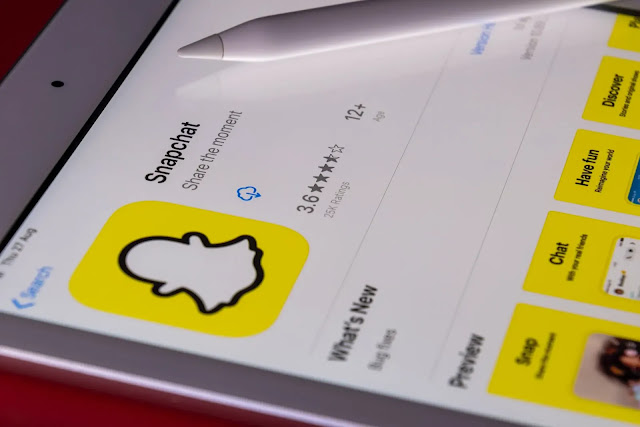Artificial intelligence (AI) has grown more and more widely used in social media platforms in recent years. One of the most widely used social media sites, Snapchat, has introduced an AI chatbot that uses OpenAI's GPT technology. The way users interact with the site will be revolutionized by this chatbot, which can comprehend and reply to natural language inquiries.
What is the AI robot on Snapchat?
Recently, Snapchat released an AI chatbot that uses OpenAI's GPT technology. Users can connect with the site more naturally thanks to the chatbot's conversational interface, which it is designed to offer. Because the chatbot can comprehend and answer questions in normal language, using it is simpler and more simple. Users can use the chatbot to find specific material on the app, search for specific lenses or filters, and get instructions on how to utilize various tools. The AI chatbot is anticipated to revolutionize user interaction with Snapchat by delivering a more individualized and convenient experience.
Does Snapchat have an AI filter?
Yes, Snapchat does have artificial intelligence (AI)-powered lenses and effects. These glasses make use of computer vision technology, an artificial intelligence (AI) technique that can recognize and track objects in real-time. As a result, the lenses can enhance photographs and videos with augmented reality effects in a way that engages with the user's surroundings. As an illustration, the well-known dog filter on Snapchat uses AI to identify and track the user's face before overlaying a 3D dog's nose, ears, and tongue. New lenses are frequently added to the Snapchat app, and AI-powered lenses are continually changing.
What language is Snapchat programmed in?
With a large portion of its code written in Objective-C, a language used for creating apps for Apple's iOS operating system, Snapchat's programming language is mostly based on Java. The iOS version of the app is developed in Objective-C and Swift, a more recent programming language created by Apple, whereas the Android version is mostly developed in Java.
Other programming languages are also used by Snapchat for particular tasks, such as Python for data analytics and machine learning and JavaScript for its web-based components. There are several ways to sustain and grow a language.
The new AI chatbot on Snapchat
Over 500 million people use the multimedia messaging app Snapchat every day. The capacity to send and receive "snaps," which are images or movies that vanish after a predetermined amount of time, is the main function of the program. Since then, Snapchat has developed to incorporate features like chat capabilities, lenses, and filters.
The new Snapchat AI chatbot offers a conversational interface that recognizes natural language and replies appropriately to improve the user experience. Users will be able to interact with the platform more naturally thanks to this functionality, creating a seamless experience.
The Snapchat app's use of OpenAI's GPT technology, which is at the cutting edge of natural language processing, marks a huge development for AI-powered chatbots. The technology can simulate human communication by responding in a way that reflects the subtleties of language, including idioms and expressions.
Users will be able to search for particular app content using the chatbot, such as friends' profiles or particular Snaps. Additionally, users can ask the chatbot for advice on lenses or filters, and the chatbot will respond with recommendations depending on their request. Additionally, by offering instructions on how to use various tools, the chatbot can assist users in navigating the app's numerous features and settings.
Snapchat's AI chatbot is anticipated to change how users engage with the site and make it more user-friendly. By offering tailored recommendations and a more user-friendly experience, the chatbot is also anticipated to increase engagement on the platform.
The risk of privacy violations is one potential drawback to the deployment of AI chatbots. Data about users may be misused or shared without the user's consent if the chatbot has access to that information. Snapchat has acknowledged that it has made measures to safeguard user privacy and data security and that the chatbot will abide by the current privacy standards of the service.
One example of how AI technology is being incorporated into social media platforms is the introduction of Snapchat's AI chatbot. For instance, Facebook has been experimenting with AI-driven chatbots for several years, with its Messenger platform serving as an excellent illustration.
As more businesses strive to provide users a smooth, customized experience, AI-powered chatbots are expected to gain popularity over the next years. Chatbots are becoming more intelligent and can comprehend user inquiries and answer them in a way that resembles human conversation as a result of developments in natural language processing and machine learning.
It is anticipated that integrating AI chatbots into social media platforms would also enhance user retention and drive engagement. Users are more inclined to stick with the app by offering personalized recommendations and a more user-friendly experience, which ultimately benefits the platform over time.
In conclusion, the introduction of a GPT-enabled AI chatbot by Snapchat, powered by OpenAI, represents a significant advancement in the incorporation of AI into social media platforms. The user experience on Snapchat is anticipated to change as a result of the chatbot's capacity to comprehend questions expressed in natural language and react conversationally.
Snapchat has told customers that it has taken precautions to safeguard data protection and that the chatbot will abide by current privacy regulations, despite the possibility of privacy breaches? It will be interesting to observe how this technology continues to change how we connect with these platforms given the rise of AI chatbots in social media.




_11zon.png)

No comments:
Post a Comment